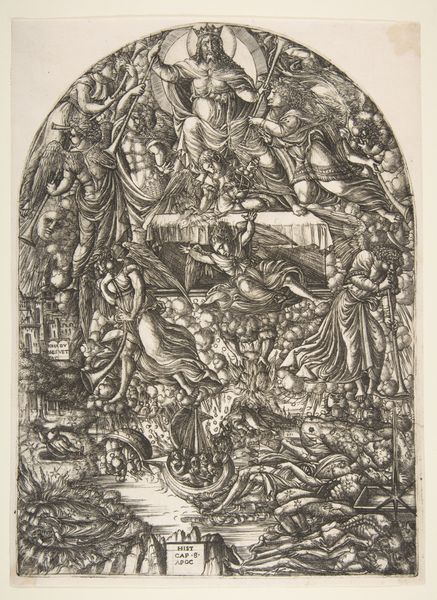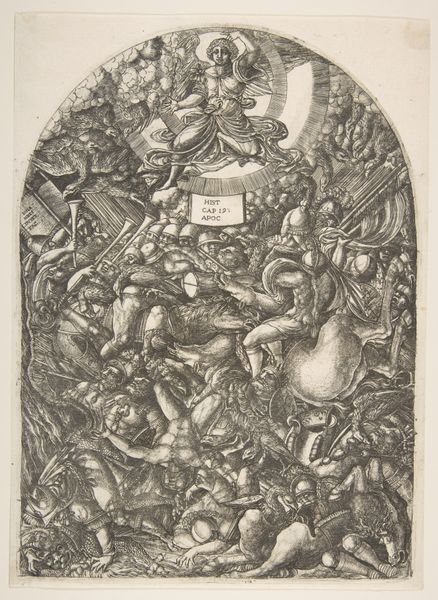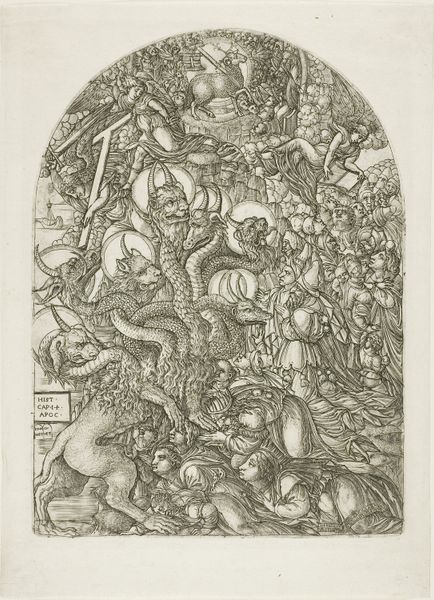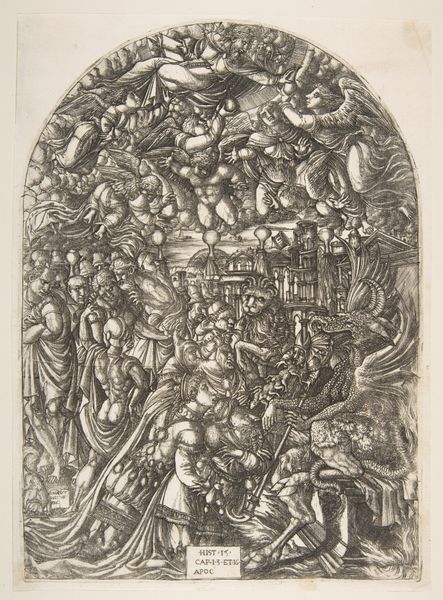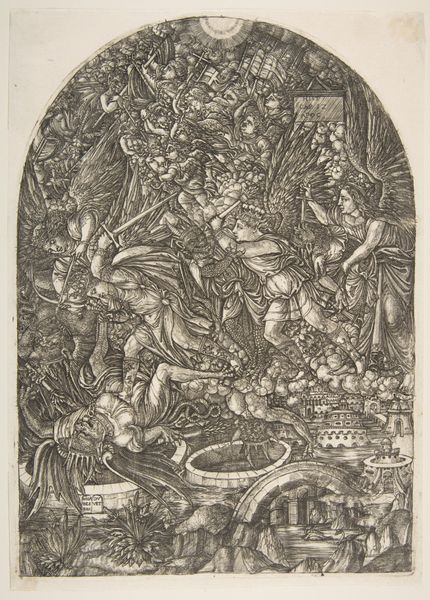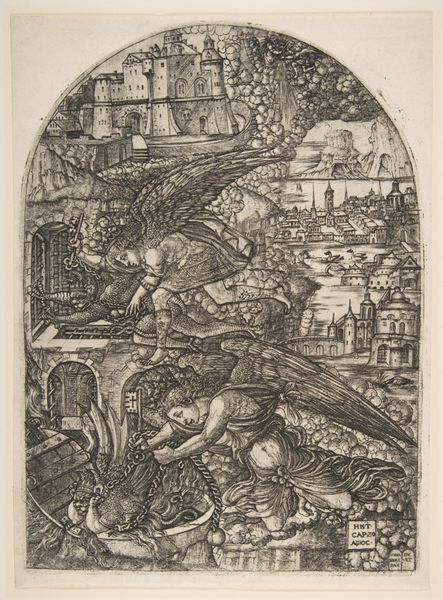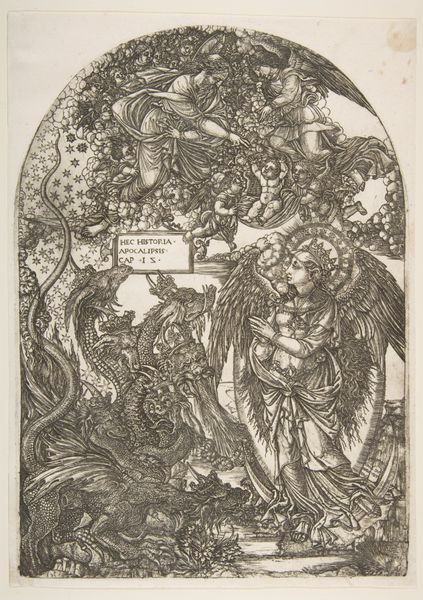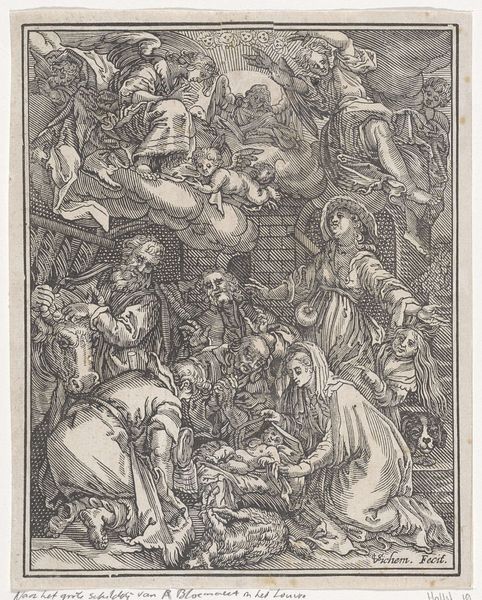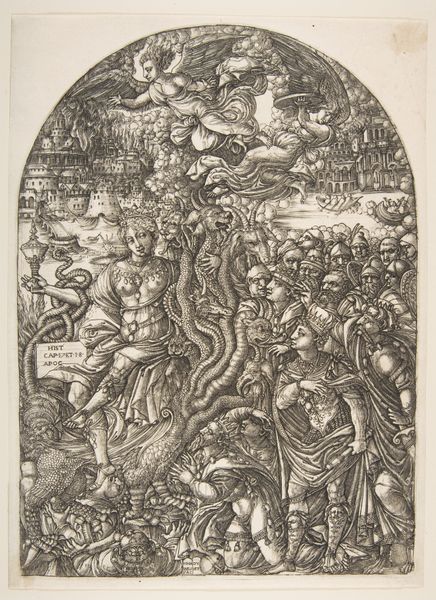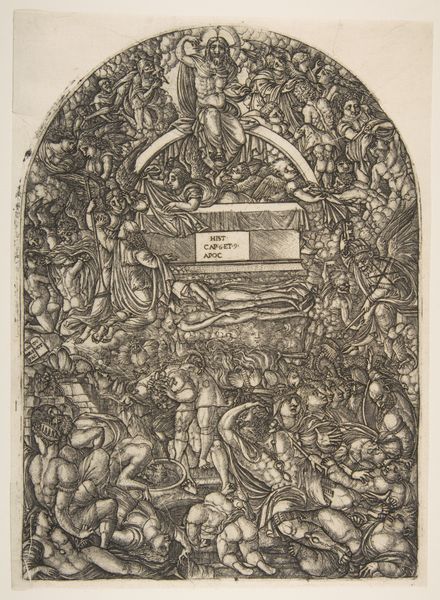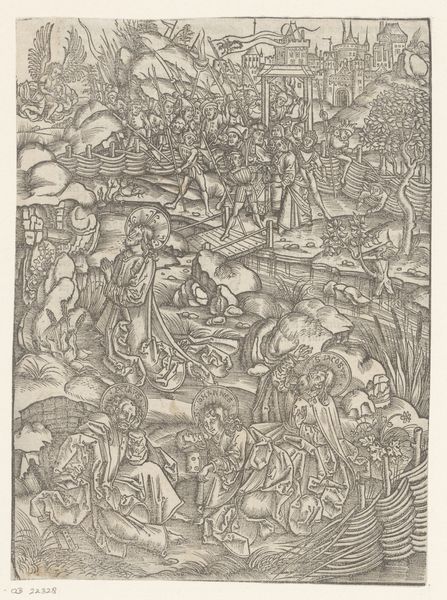
Saint John sees the Four Horsemen, from the Apocalyspe 1480 - 1570
0:00
0:00
drawing, print, ink, engraving
#
drawing
#
ink drawing
#
narrative-art
# print
#
figuration
#
ink
#
history-painting
#
northern-renaissance
#
engraving
Dimensions: plate: 11 7/8 x 8 11/16 in. (30.2 x 22.1 cm) sheet: 12 1/8 x 8 7/8 in. (30.8 x 22.6 cm)
Copyright: Public Domain
Curator: Look at this print! Jean Duvet’s "Saint John sees the Four Horsemen, from the Apocalypse," created sometime between 1480 and 1570. It’s quite striking. Editor: Indeed, a real visual bombardment. So much is going on! My first impression is a sense of utter chaos, everything seems to tumble down towards us. Curator: That's interesting. Given Duvet's influences from the Northern Renaissance, his approach to line and density speaks to a tradition deeply invested in surface and texture. It is an engraving printed with ink; the labor invested in those swirling marks... Remarkable! Editor: Absolutely! It is as much a reflection of the social and religious anxieties of its time, isn't it? The apocalyptic imagery connects directly to political unrest, and perhaps also to a certain level of fear in the wake of social changes. Curator: One must consider, too, the conditions under which Duvet, a goldsmith by training, accessed engraving as a means of expanding production. Think about the guilds, and systems that influenced who had access to printmaking, the types of ink being manufactured at the time. Editor: All incredibly valid material considerations! For a contemporary viewer, how do we process these densely layered bodies tumbling before the divine’s judgment? I am reminded that artistic renderings such as these held public roles far beyond aesthetics—shaping public beliefs and providing cautionary symbols that extended to political behaviour. Curator: Well, from a material standpoint, that widespread influence came from print's relative reproducibility compared to other mediums! Each impression disseminated not just an image, but ideas dependent on production and labor. Editor: I wonder about this piece's role during the Reformation. Considering iconoclasm, the use of strong visuals takes a complex, even dangerous turn as imagery becomes centrally important. Curator: In summary, it demonstrates engraving's fascinating intersections—spiritual representation filtered through human material transformation. Editor: Yes, leaving us to contemplate how artistry like Duvet’s reflected, and perhaps even fueled, cultural discourse of its tumultuous age.
Comments
No comments
Be the first to comment and join the conversation on the ultimate creative platform.
